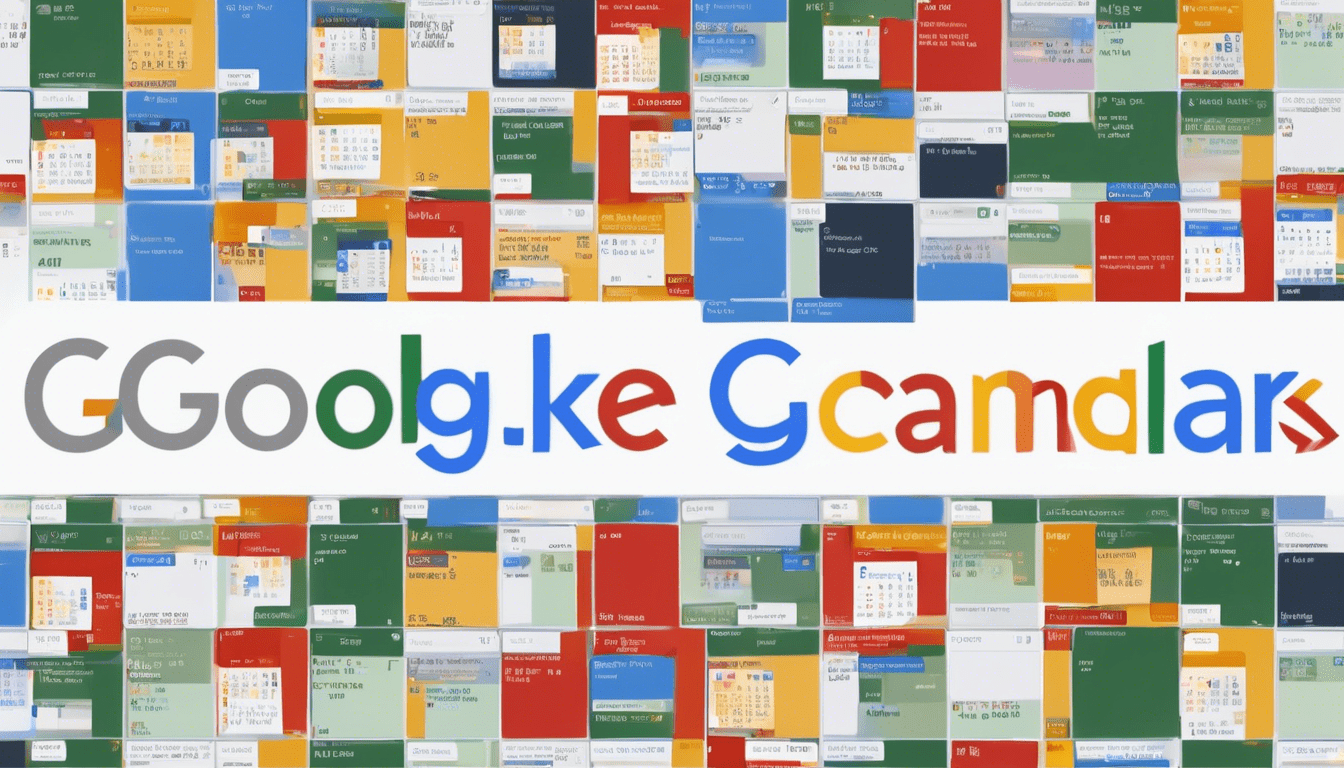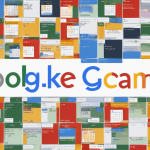Simplify your scheduling process by seamlessly connecting Google and Outlook calendars. This integration eradicates double bookings, boosts productivity, and centralizes event management across platforms. Whether on desktop or mobile, establishing a reliable sync transforms chaotic planning into an effortless routine. Discover essential steps, troubleshooting tips, and best practices to keep your calendars aligned and your time well-managed—making complex scheduling a thing of the past.
Benefits of Integrating Google and Outlook Calendars
Integrating Google and Outlook calendars provides a significant boost in scheduling efficiency and overall time management. When these calendars are synced, all events, meetings, and appointments are automatically updated across both platforms, which effectively reduces the risk of double booking. This synchronization ensures you are always aware of your commitments, no matter which calendar you check first.
Also read : What role does cybersecurity education play in UK schools?
One major benefit is enhanced productivity. Having seamless access to all your calendar data in one location eliminates the need to switch between apps constantly. This consolidated view allows you to plan your day with clarity and reduces the chances of missing important deadlines or meetings.
For professionals juggling multiple responsibilities, integrating Google and Outlook calendars simplifies the management of personal and work schedules. You get real-time updates from both calendars, which keeps you informed and organized effortlessly. This integration can also improve collaboration since you can share or view others’ availability across platforms without confusion.
Also to read : Sync google and outlook calendars for seamless scheduling
If you want to explore practical ways to synchronize your calendars for seamless scheduling, consider useful tools and guides like https://syncthemcalendars.com/. This resource helps to streamline your calendar integration process, maximizing the benefits of synced Google and Outlook calendars.
In summary:
- Synchronization prevents conflicting appointments.
- Consolidated access boosts productivity.
- Real-time updates improve time management.
These advantages make calendar integration an essential strategy for efficient daily planning.
Step-by-Step Guide to Connect Google and Outlook Calendars
Simplify your schedule by unifying your calendars effortlessly.
Connecting Google Calendar with Outlook on Desktop
To begin connecting Google Calendar with Outlook on desktop, you first need to install the necessary add-ins or plugins. For Outlook, the most reliable approach is using the official “Google Workspace Sync for Microsoft Outlook” or adding your Google account within Outlook’s account settings. Here’s how:
- Open Outlook and navigate to File > Account Settings > Account Settings.
- Click “New” and select “Email Account” or “Internet Calendar” depending on your Outlook version.
- Enter your Google account credentials to link it directly.
- Allow Outlook to access your Google calendar events.
Once linked, Outlook will import your existing Google calendar events. To keep your calendars updated, enable the auto-update option found under sync settings to ensure any changes you make in Google Calendar reflect quickly in Outlook. This integration helps manage all appointments from one platform, eliminating double bookings and confusion.
The process is straightforward but requires careful attention to permissions and security prompts from both Google and Outlook. This guarantees a seamless, real-time synchronization experience.
Connecting Outlook Calendar with Google Calendar on Mobile Devices
Syncing your Outlook Calendar with Google Calendar on mobile devices enhances productivity on the go. Whether on Android or iOS, you can use either the official Outlook app, Google Calendar app, or trusted third-party applications.
To sync on Android:
- Install the Outlook app from Google Play Store.
- Sign in with your work or personal Microsoft account.
- Under Settings, enable calendar sync.
- Open the Google Calendar app, and your Outlook events will appear automatically.
On iOS:
- Download the Outlook app from the App Store.
- Add your account and enable calendar sync in Settings.
- Alternatively, add your Outlook calendar account directly in iOS Settings > Passwords & Accounts > Add Account > Outlook.
- Google Calendar app will then display these synced events.
Managing sync frequency and permissions is crucial. Mobile apps typically refresh calendars every few minutes, but manual sync options are available to update instantly. Always review app permissions to maintain privacy and control over your calendar data. By using official apps, you integrate calendars securely with minimal setup.
Automating Calendar Sync with Third-Party Apps
For users seeking automation beyond manual syncs, third-party apps like Zapier, IFTTT, and Sync2 provide advanced workflows. These services allow you to create triggers—such as when an event is added in Google Calendar, it automatically appears in Outlook, and vice versa.
Setting up automation involves:
- Creating accounts with the chosen service.
- Connecting both Google and Outlook calendar accounts via OAuth authorization.
- Defining sync rules and event filters to suit your schedule needs.
These apps can sync calendars continuously without user intervention, reducing manual overhead. However, evaluating app features, data privacy policies, and security is essential before granting access to sensitive calendar information.
Using these third-party solutions is ideal for professionals managing multiple calendars seamlessly across various platforms.
By following these steps and solutions, syncing Google and Outlook calendars becomes efficient, reliable, and tailored to your device preferences.
Troubleshooting Common Calendar Integration Issues
When calendar integration falters, addressing sync errors and failed updates promptly is crucial. These issues often stem from improper permissions, account settings, or conflicts during event updates. To resolve sync errors, first ensure that each connected calendar has been granted the necessary permissions. Without appropriate access rights, updates cannot propagate, causing discrepancies between your calendars.
Adjusting permissions is a frequent remedy. Verify calendar sharing and privacy settings to confirm that the accounts involved have both read and write access where applicable. If events are missing or duplicated, re-authorizing linked accounts often refreshes the connection, helping eliminate stale sync data.
Another common problem is handling duplicate or missing events. Sync delays can result from server-side processing, so manually refreshing the calendars can prompt immediate synchronization. In cases where events remain absent, restoring them from backups or previous sync states helps recover lost information. Being proactive about permissions and regularly monitoring sync status ensures a smooth calendar integration experience.
Additional Tips for Effortless Calendar Management
Managing your calendar efficiently can transform your daily routine. One powerful method to optimize calendar usage is color-coding and labeling events. Assigning specific colors to meeting types or project deadlines enhances visual clarity, making it easier to grasp your schedule at a glance. Labels help categorize appointments, which improves filtering and searching when your calendar becomes busy.
Another vital aspect is setting up custom notification preferences and reminders. Tailoring alerts to your needs—whether it’s a notification 10 minutes before a call or an email reminder the day before a deadline—helps prevent missed appointments and reduces last-minute stress. Remember to balance the number of reminders; too many can become overwhelming and counterproductive.
Further improvement can be achieved by integrating your calendar with other productivity tools, such as task managers, email clients, or communication platforms. This integration streamlines workflows by centralizing task scheduling, meeting coordination, and deadline tracking in one place. For example, syncing Google Calendar with Outlook can minimize double bookings and conflicts.
Best Practices for Maintaining Synchronized Calendars
Ensuring your calendars remain accurately synced is essential. Regularly checking sync status and updating apps prevents mismatches and missing events. If sync errors occur, they often stem from outdated software or permission issues, so maintaining updated applications is crucial for smooth operation.
Stay proactive by keeping your software updated, as calendar platforms frequently release patches that improve compatibility and security. Automatic updates are advisable, but manual checks ensure you haven’t missed important changes.
Lastly, coordinating with team members when sharing calendars avoids confusion. Establish clear protocols on updating shared events and permissions. Regular communication ensures everyone stays aligned, reducing scheduling conflicts and enhancing productivity.
By applying these calendar optimization strategies and synchronization best practices, managing your schedule will become a more effortless and reliable experience.








Comments are closed